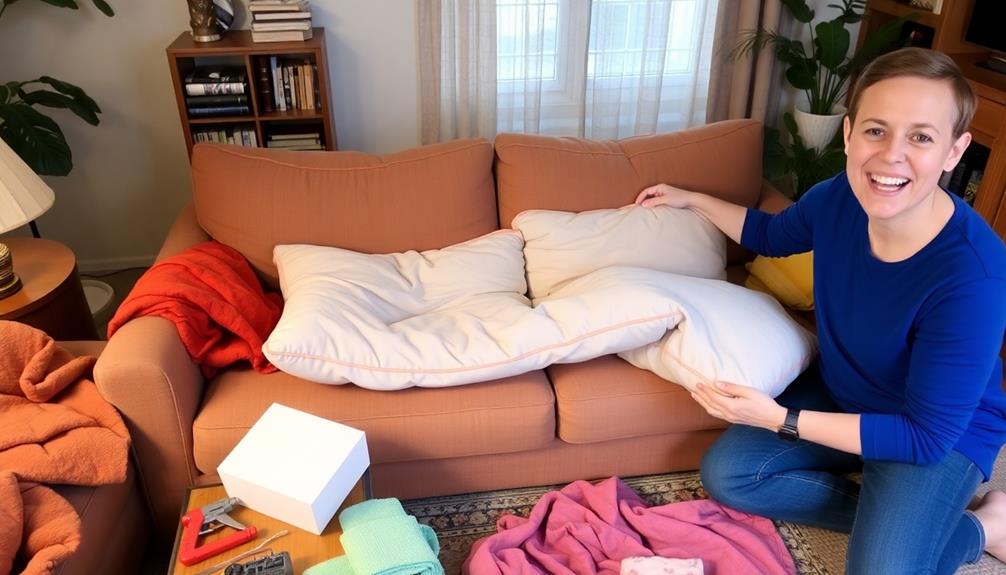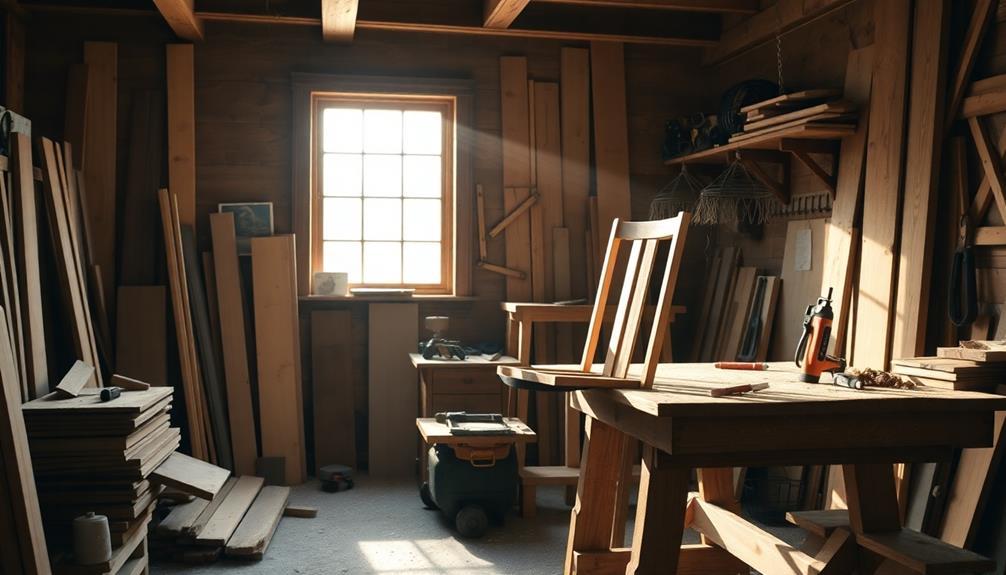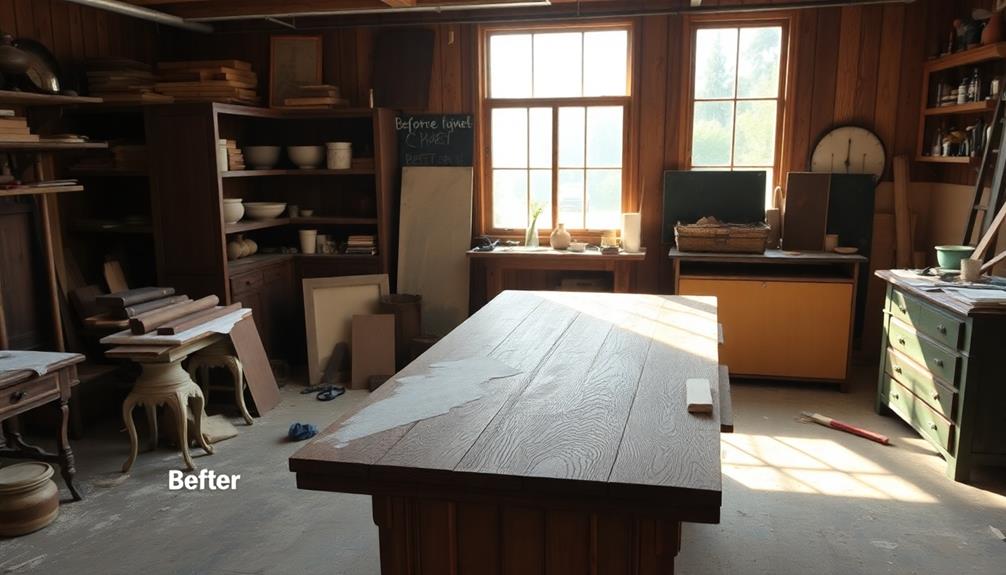If your sofa is beginning to sag, the first step is to examine the cushions for signs of wear. Try rotating or flipping them to help them regain their original shape. If the cushions are too flat, you may want to consider replacing the foam with high-density options. Additionally, it’s important to check the serpentine springs; if they are loose or broken, you should either reattach or replace them to improve support. You may need tools such as a staple gun and pliers for these repairs. To prevent future sagging, make sure to flip and rotate your cushions every two weeks and inspect the frame on a monthly basis. By maintaining your sofa properly, you can prolong its lifespan, and there’s much more to learn about how to keep it in excellent condition!
Key Takeaways
- Inspect and assess the cushions for wear; rotate or fluff them to help restore their shape and support.
- Replace sagging foam with high-density options for better support, adding Dacron wrap for extra cushioning.
- Check and repair serpentine springs; reattach loose springs or replace broken ones to maintain structural integrity.
- Regularly rotate and flip cushions every two weeks to distribute wear evenly across the sofa.
- Conduct monthly inspections of the couch frame and joints, tightening any loose screws for added stability.
Causes of Couch Sagging
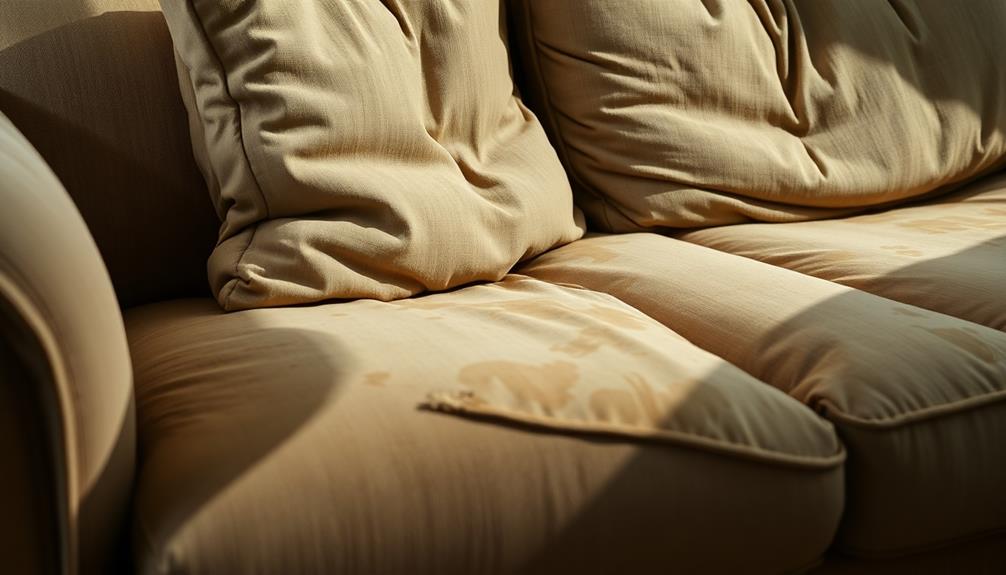
Couch sagging often happens as a result of several factors that you mightn't even notice at first. One primary reason is the deterioration of the seat cushions. Over time, the foam inside them can lose its shape and support, leading to an uncomfortable, sagging couch. Regular use compresses the cushions, and eventually, they may not bounce back.
Additionally, it's vital to evaluate the implications of wear and tear on the overall structure of your furniture, similar to how financial considerations for elderly care can impact long-term comfort and safety in living situations.
Another common culprit is the springs. If your couch has loose or broken serpentine springs, they won't provide the necessary support for the cushions. This lack of support can greatly contribute to the overall sagging.
Additionally, the quality of materials used in your couch plays a critical role. Lower-quality materials are more likely to sag after repeated use, while higher-quality options can offer better longevity.
Regular wear and tear also affects both the cushions and springs. As weight accumulates over time, the pressure can lead to a noticeable dip in the seating area.
It's important to assess both the cushions and the frame of your couch when diagnosing sagging issues, as problems can arise in multiple components.
Assessing and Repairing Cushions
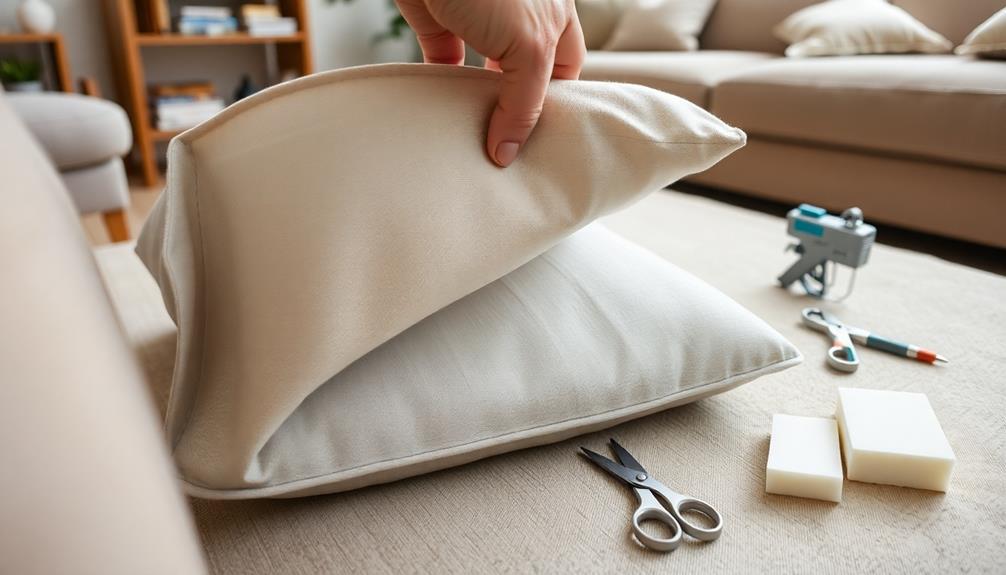
To tackle the issue of sagging, start by evaluating your cushions. Remove them from the sofa and lay them flat. Check for visible indentations or wear in the foam. If your cushions look uneven, you can often fix this by reversing or rotating them. Regularly fluffing your cushions can also help maintain their shape.
| Cushion Condition | Recommended Action |
|---|---|
| Slightly sagging | Rotate or reverse cushions |
| Moderately sagging | Fluff regularly and add a wrap |
| Excessively sagging | Replace foam with high-density options |
If your cushions are excessively sagging, consider replacing the foam with high-density alternatives to enhance support and longevity. Another effective strategy is to add a Dacron or polyester wrap around the foam, providing additional structure and cushioning to prevent further sagging.
Fixing Serpentine Springs
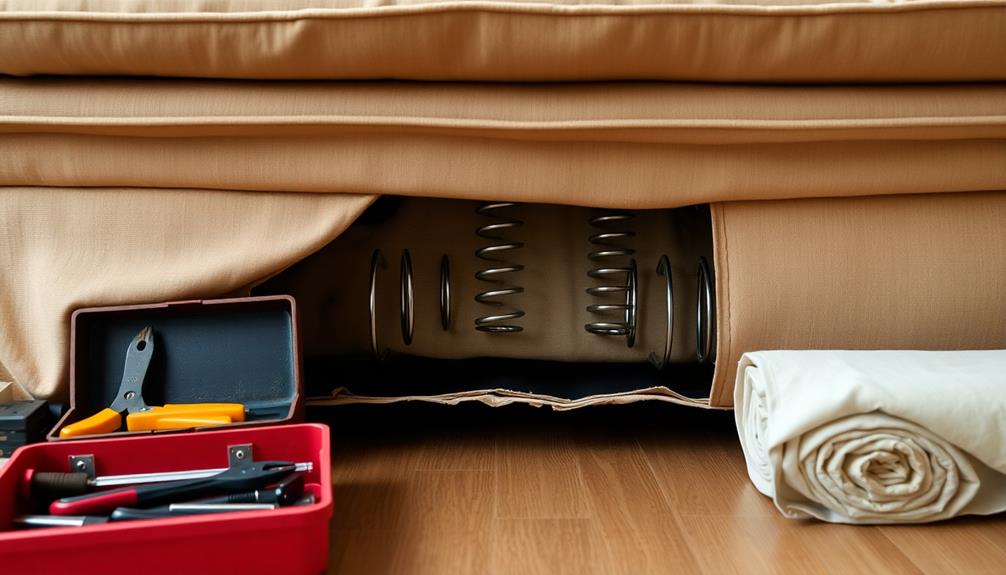
Sagging sofas often owe their discomfort to worn-out serpentine springs, which can lose their tension or even break over time. To fix a couch effectively, you need to start by inspecting the frame for any loose or broken springs. If you find loose serpentine springs, use pliers to reattach them to their clips, guaranteeing they fit tightly. A snug connection is essential for providing the support your sofa needs.
Additionally, consider the importance of maintaining a clean environment by regularly using best vacuums for dust removal to eliminate allergens that can affect your overall comfort.
In cases where a spring is broken, you'll need to replace it entirely. Make sure to source the correct size and type of serpentine spring, as using the wrong one can compromise your couch's integrity.
When you install new or repaired springs, secure them with twine or paper-wrapped wire in a Z-shape. This method helps maintain the necessary tension and support for your sofa.
Additionally, regularly checking the condition of the springs can prevent future sagging. By addressing issues promptly, you can save on more extensive repairs later. Taking these steps guarantees that your sofa remains comfortable and supportive for years to come.
Tools and Materials Needed
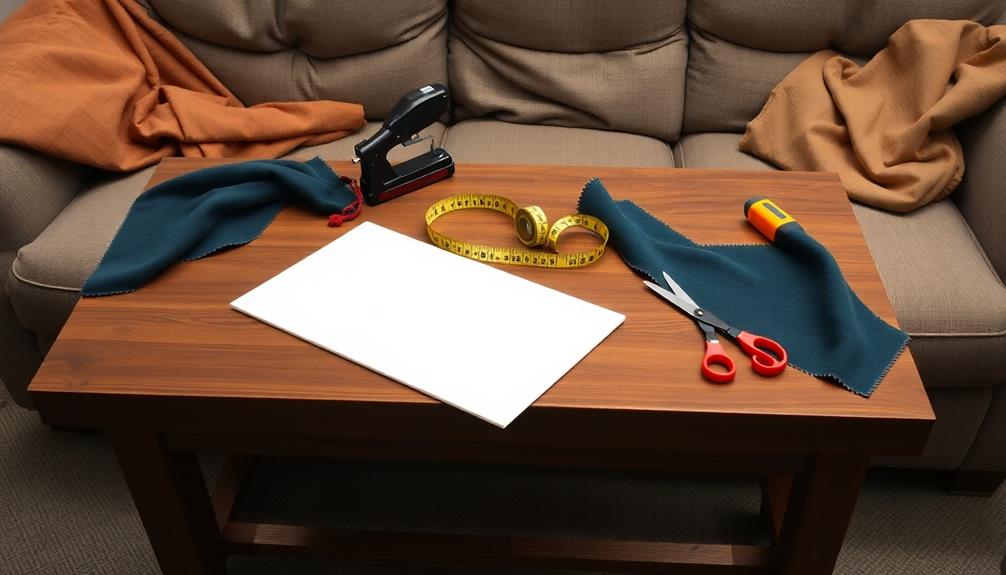
When tackling a sagging sofa, having the right tools and materials on hand makes all the difference. Start with essential tools like a staple gun for reattaching upholstery, pliers for adjusting springs, and a utility knife for cutting new foam or batting. These will help you effectively address the sagging issue.
Additionally, preparation is key to maximize your repair efforts, much like effective consultation in interior design basics.
You'll also need replacement materials. High-density foam is vital for providing the support your sofa needs, so make sure to source it from local upholstery supply stores or online retailers.
Don't forget to grab some batting and upholstery fabric to finish off your repair.
If you're working on the springs, serpentine springs and matching clips are necessary to guarantee proper support and stability for your couch. A drill can be helpful for removing or securing couch legs and for any frame repairs, enhancing overall stability.
Lastly, safety gear like gloves and a dust mask is recommended. This will protect you against debris and dust while you perform your repair tasks.
With these tools and materials needed, you're well-equipped to restore your beloved sofa!
Maintenance Tips for Longevity
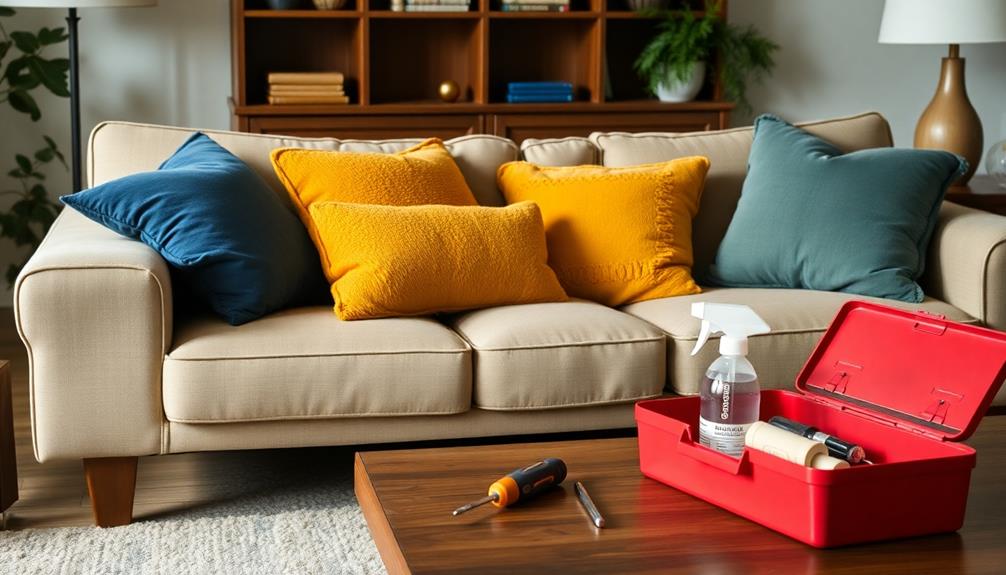
Maintaining your sofa's comfort and appearance is essential for longevity, and a few simple habits can make a big difference. Start by regularly rotating and flipping your sofa cushions to evenly distribute wear. This not only prolongs their lifespan but also keeps your seating comfortable.
Next, inspect the couch frame and joints periodically. Tighten any loose screws and address minor issues before they turn into major repairs. Additionally, clean your upholstery with manufacturer-recommended products and vacuum frequently to prevent dust accumulation and maintain fabric condition. For those caring for a leather sofa, it’s essential to use a specialized leather conditioner to prevent cracking and preserve the material’s suppleness. Avoid placing the sofa in direct sunlight, as this can lead to fading and damage over time. Regular maintenance will ensure your furniture remains in good condition for years to come. In addition to these steps, rotating cushions regularly will help distribute wear evenly and extend the life of your couch. For those seeking more detailed guidelines on *how to maintain leather sofas*, consulting with the sofa’s manufacturer can provide insights specific to your particular model. Overall, a proactive approach to maintenance can greatly enhance both the appearance and longevity of your furniture.
Schedule routine maintenance checks to assess the condition of springs. Replace any loose or broken ones to guarantee consistent support. Finally, implement preventive measures by using cushion covers to protect against stains and exposure to sunlight, which can fade and damage upholstery over time.
Here's a quick reference table for your maintenance routine:
| Maintenance Task | Frequency | Purpose |
|---|---|---|
| Rotate & Flip Cushions | Every 2 weeks | Even wear |
| Inspect Couch Frame | Monthly | Prevent major repairs |
| Vacuum & Clean Upholstery | Weekly | Maintain fabric condition |
| Check Springs | Every 6 months | Guarantee support |
| Use Cushion Covers | As needed | Protect against stains |
Frequently Asked Questions
How to Firm up a Sagging Sofa?
To firm up your sofa, try inserting plywood beneath the cushions for support. You can also replace old foam, rotate cushions regularly, and add batting for extra comfort, ensuring a more comfortable seating experience.
How Can I Make My Sofa Firm Again?
To make your sofa firm again, consider replacing the foam, adding a plywood board for support, or using a sofa topper. Regularly fluffing and rotating the cushions also helps maintain their shape and comfort.
How Do You Fix a Dropped Couch?
Isn't it frustrating when your couch sags, leaving you feeling unsupported? To fix a dropped couch, check the springs, add plywood for support, and consider replacing worn-out foam for a firmer, more comfortable seat.
How to Prevent a Couch From Sinking?
To prevent your couch from sinking, regularly rotate and flip cushions, use additional support underneath, limit heavy loads, and maintain it by cleaning and fluffing cushions. Regular maintenance checks can help you catch issues early.
Conclusion
By addressing the causes of your sofa's sagging and taking the time to repair it, you can extend its life and enjoy your favorite spot again. You might think these fixes are too complicated, but with the right tools and a bit of patience, you'll find they're quite manageable. Investing some effort now will pay off in comfort and savings later. So roll up your sleeves and give your sofa the attention it deserves!
